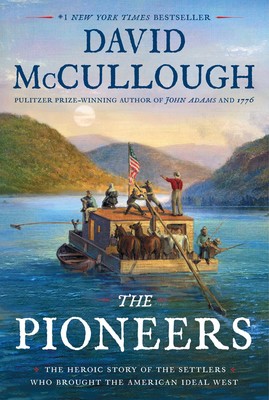 |
| Hubby's great-great-grandpa John McClure left Rockbridge County, Virginia to settle in Ohio by 1810. |
The McClure Family from Donegal
John McClure was born in Rockbridge County, Virginia. His father, Alexander McClure (1717-1790), was one of the original journey-takers in the McClure family.
Alexander and a number of siblings and his father (Halbert McClure) were born in Donegal and sailed across the Atlantic during the 1730s. Landing in Philadelphia, they walked as a group to Virginia colony, where they purchased farmland for the family. (This detail is from the well-researched book, Following the McClures--Donegal to Botetourt).
Alexander lived about two miles from his father, Halbert, in Virginia, close to his brothers who had come with the family from Donegal. He himself purchased land from the Borden Grant during the 1740s. Like many men of that time and place Alexander served in the militia, from about 1742-1766.
Alexander married Martha Moore and their son John was born in Virginia in 1781, by that time a state, no longer a colony following the American Revolution.
John's "Ohio Fever"
John McClure married Ann McFall (1780-1815?) in Virginia in 1801. The next record I can find mentions the birth of their daughter Jane McClure in 1810 in Ohio. Their son Benjamin McClure was born in Adams county, Ohio, in 1812. This early 1800s-period coincides with "Ohio Fever" in the area.
Given the McClure family's long-standing desire for acquiring fresh, fertile farmland, it's not much of a leap to see John uprooting his growing family to settle more than 300 miles away in Ohio (see map at top). John McClure and Ann McFall McClure settled down in Ohio, but some of their descendants kept moving West to Indiana.
Life in the Land of The Trees
What was life like on the Ohio frontier during the "fever" period? David McCollough mentioned a book he remembers from when he was young, part of a trilogy by Conrad Richter. It's called The Trees and it's historical fiction, following the Luckett family as they leave western Pennsylvania at the end of the 1700s to settle north of the Ohio River.
At one point, the characters look out on what seems to be a veritable sea of trees. No cabins, no trails, no clearings. Just sturdy, majestic trees as far as the eye can see in Ohio. Trees that provided fuel, were good for cabins and furnishings, and needed to be cleared--by hand!--to create space for seedlings.
Daily life was most likely even more challenging than described in the book, but it's a good starting point for thinking about trying to feed and clothe a family on its own in the Ohio wilderness. I'm going to read the next two novels in the trilogy to see what happens to descendants of the Lucketts!

























